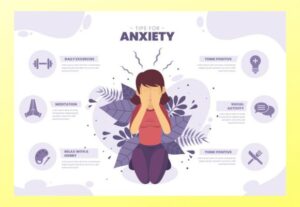Pain relief medicines are a cornerstone of healthcare in America, providing relief to millions suffering from acute and chronic pain. In a country where pain management is a critical aspect of healthcare, understanding the diverse array of pain relief medications, their benefits, risks, and innovations is essential. From over-the-counter remedies to prescription opioids, nonsteroidal anti-inflammatory drugs (NSAIDs), and emerging treatments, this comprehensive guide navigates the landscape of pain relief medicines in America.
The Scope of Pain in America: Pain is a pervasive issue in the United States, affecting people of all ages and backgrounds. According to the National Institutes of Health (NIH), chronic pain affects approximately 50 million American adults, contributing to physical disability, emotional distress, and decreased quality of life. Additionally, acute pain resulting from injuries, surgeries, or medical conditions is a common experience for many Americans.
Over-the-Counter (OTC) Pain Relief Medicines: Over-the-counter pain relief medicines are easily accessible and widely used for the management of mild to moderate pain. Common OTC options include acetaminophen (Tylenol), ibuprofen (Advil, Motrin), and naproxen (Aleve). These medications work by reducing inflammation, blocking pain signals, and lowering fever. While generally considered safe when used as directed, misuse or overuse can lead to adverse effects, such as liver damage with acetaminophen or gastrointestinal bleeding with NSAIDs.
Prescription Pain Relief Medications: For severe or chronic pain, healthcare providers may prescribe stronger medications to provide relief and improve quality of life. Opioids, such as oxycodone (OxyContin), hydrocodone (Vicodin), and morphine, are potent painkillers commonly used for acute and cancer-related pain. However, the opioid epidemic in America has highlighted the risks associated with these drugs, including addiction, overdose, and diversion.
To mitigate these risks, healthcare providers adhere to strict prescribing guidelines, conduct thorough patient assessments, and monitor for signs of misuse or dependence. Additionally, non-opioid alternatives, such as tramadol, gabapentin, and antidepressants, are increasingly prescribed for chronic pain management, offering effective relief with lower abuse potential.
Nonsteroidal Anti-Inflammatory Drugs (NSAIDs): Nonsteroidal anti-inflammatory drugs (NSAIDs) are a class of medications commonly used to relieve pain, reduce inflammation, and lower fever. Available in both over-the-counter and prescription formulations, NSAIDs work by inhibiting the production of prostaglandins, chemicals that promote inflammation and pain.
While NSAIDs are effective for conditions such as arthritis, muscle strains, and menstrual cramps, long-term use can increase the risk of gastrointestinal ulcers, kidney damage, and cardiovascular events. Healthcare providers may recommend NSAIDs for short-term pain relief and advise caution with prolonged or high-dose use, especially in individuals with underlying health conditions.
Innovations in Pain Management: Advancements in pain management have led to innovative treatments and technologies aimed at improving outcomes and reducing reliance on traditional pain relief medications. Interventional procedures, such as nerve blocks, spinal cord stimulation, and radiofrequency ablation, target specific pain pathways to provide localized relief without systemic side effects.
Furthermore, alternative therapies, including acupuncture, physical therapy, and mindfulness-based stress reduction, complement conventional treatments by addressing the physical, emotional, and psychological aspects of pain. Integrative approaches that combine pharmacological and non-pharmacological interventions offer holistic solutions tailored to individual needs.
The Role of Education and Advocacy: In light of the complexities surrounding pain relief medicines in America, education and advocacy play crucial roles in promoting safe and effective pain management practices. Healthcare professionals must stay informed about the latest guidelines, research findings, and treatment options to deliver evidence-based care and empower patients to make informed decisions.
Moreover, public awareness campaigns, legislative initiatives, and community outreach efforts are essential for combating stigma, promoting responsible opioid prescribing practices, and expanding access to non-opioid pain treatments. By fostering collaboration among healthcare providers, policymakers, patients, and advocacy organizations, we can work towards a future where pain relief is equitable, compassionate, and multidimensional.
Conclusion: Pain relief medicines play a vital role in addressing the diverse needs of individuals living with pain in America. From over-the-counter remedies to prescription opioids, NSAIDs, and innovative therapies, a multitude of options exist to alleviate suffering and improve quality of life. However, navigating the landscape of pain management requires careful consideration of benefits, risks, and individual preferences.
As we strive to optimize pain care and minimize harm, a comprehensive approach that integrates pharmacological and non-pharmacological interventions, promotes education and advocacy, and addresses systemic barriers is paramount. By fostering collaboration, compassion, and evidence-based practice, we can empower individuals to live fuller, more meaningful lives free from the burden of unmanaged pain.


